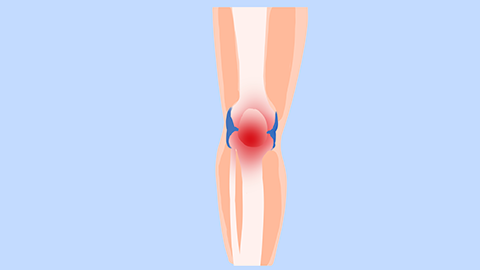What could be the reason for Achilles tendon pain two months after a knee injury?
Generally, two months after a knee injury, the main causes of Achilles tendon pain include lower limb force compensation, excessive stretching of the Achilles tendon, Achilles tendinitis, retrocalcaneal bursitis, and partial Achilles tendon tear. If discomfort occurs, it is recommended to seek timely medical evaluation and treatment at a正规 hospital. Specific explanations are as follows:
1. Lower Limb Force Compensation
After a knee injury, limited mobility shifts body weight during walking, causing the Achilles tendon to bear extra pressure. Prolonged uneven loading leads to pain. Correct walking posture, use crutches to reduce strain on the Achilles tendon, avoid prolonged standing, and elevate the lower limbs when resting.

2. Excessive Stretching of the Achilles Tendon
During knee rehabilitation exercises, overly large movements may excessively stretch the Achilles tendon, causing minor fiber damage and resulting in pain. Reduce training intensity, increase warm-up time, and apply cold compresses to the Achilles tendon after exercise to relieve strain-related injuries.
Prolonged compensatory stress or stretching on the Achilles tendon can trigger an aseptic inflammation. Inflammatory irritation causes tendon pain, which worsens with activity. Under medical guidance, medications such as celecoxib capsules, diclofenac sodium sustained-release tablets, or etoricoxib tablets may be taken. Wearing Achilles tendon supports and avoiding strenuous activities are also recommended.
4. Retrocalcaneal Bursitis
Increased friction between the Achilles tendon and the bursa irritates the bursa, leading to inflammation, congestion, and swelling, which causes Achilles tendon pain—especially noticeable upon pressing. Under medical supervision, medications such as ibuprofen sustained-release capsules, naproxen sodium tablets, or Huoxue Zhitong capsules may be used. Local injections of sodium hyaluronate can help reduce friction and tissue damage.
5. Partial Achilles Tendon Tear
Long-term compensatory loading or overstretching may cause partial rupture of the tendon fibers, resulting in pain, swelling at the tendon site, and restricted movement. Under medical guidance, medications such as eperisone hydrochloride tablets, compound chlorzoxazone tablets, or vitamin E softgels may be prescribed. In severe cases, Achilles tendon repair surgery may be required, followed by immobilization and rest postoperatively.
In daily life, avoid bearing weight too early after a knee injury; progress rehabilitation exercises gradually to prevent overstretching the Achilles tendon; wear soft, comfortable shoes to reduce tendon pressure; keep the Achilles tendon warm to prevent chilling; and schedule regular follow-ups to monitor tendon recovery.




